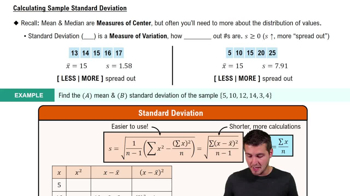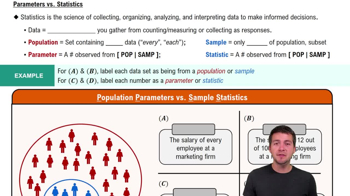In Exercises 21–28, use the same list of cell phone radiation levels given for Exercises 17–20. Find the indicated percentile or quartile.
P50
 Verified step by step guidance
Verified step by step guidance Verified video answer for a similar problem:
Verified video answer for a similar problem:



 8:45m
8:45mMaster Calculating Standard Deviation with a bite sized video explanation from Patrick
Start learning